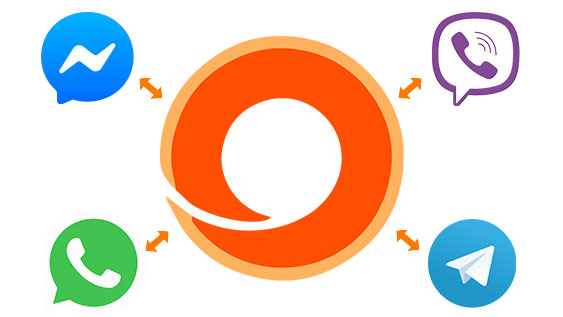

Long Code vs Short Code – What’s Right for Your SMS Marketing Strategy?
The good news is there are more ways to reach current and potential customers than ever before. The less-good news? You’re not the only one with those options – and customers – at your fingertips.
Marketing has seen myriad iterations over the years, from full-page ads in the Sunday newspaper to fliers under windshield wipers to email blasts and retargeting with banners on websites, and much more. With phones functioning as a fifth limb, the key to reaching your audience is through SMS marketing.
If you’ve realized the value in SMS for your outreach, you’ve likely seen there are a couple of options for you. We’ll look at long code vs short code SMS to help make sense of it all so you can choose the best option.
Long Code vs Short Code SMS
SMS marketing allows you to reach current and prospective customers in a more personalized way. With succinct, actionable messages delivered to text message inboxes, your subscribers are more likely to engage with your brand.
SMS has a 98% open rate and at least 60% of customers open an SMS within 1-5 minutes of receiving it. Those are pretty staggering numbers! In this era where emails are quickly buried in the inbox, SMS reigns supreme for effective communication.
Business SMS can be approached in a couple of different ways, and they both have their advantages. Essentially the numbers you, as a business, use to send text from are referred to as “long code” or “short code.” These numbers show up as the sender of the text in the same way a personal phone number would display on caller ID.
When exploring long code vs short code SMS it’s important to understand what they are, and what they’re each good for.
What is a Long Code?
Long codes are 10-digit numbers commonly referred to as 10DLC. These virtual phone numbers can be used to send and receive SMS and MMS. If you have international subscribers, you can use long codes to reach out to them as well. When it comes to long code vs short code, those looking for two-way texting opt for long code numbers.
What is a Short Code?
A short code is a five- to six-digit number used to send messages to your subscribers. These short numbers are easily recognizable by your recipients. Short codes are assigned to businesses on a lease basis, and the paperwork is handled by your SMS platform provider. This can take 3-12 weeks so if you choose to use a short code it’s best to start planning early.
Related: Short Code SMS for High Volume Texting
Long Codes
Long codes were once used purely for person-to-person texts. In 2021, however, long codes can be used for mass texting. To compare long code vs short code numbers, we should look at some benefits:
Long Code Benefits
Long codes have benefits vs short codes including:
- The credibility and trust that comes with sending from a local number
- Long codes feel like a personal message, as they look like standard phone numbers
- Support for two-way texting including MMS and voice communications
When to Use a Long Code
Long codes are best used for customer service messages and instances where you may wish to receive responses from your recipients. Delivery rates differ slightly depending on the carrier, but on average long codes can send 1-25 messages per second, per code. That may sound pretty rapid until your subscriber list grows. If you need to send mass SMS messages, this option falls short in the battle of long code vs short code.
Another advantage to long codes is that your customers can call you. Short codes are for one- or two-way texting only. If you need a code that supports both one- and two-way text and can receive calls, long codes are your answer.
Short Codes
As mentioned, short codes are, just as it sounds, short phone numbers used to distribute messages. These numbers are five- to six-digits long and stand out amongst a recipient’s text inbox.
Short codes are leased and come with a monthly or annual fee, similar to the domain for your website. Your SMS platform provider will take care of all of the nitty-gritty and get the paperwork processed for you so that you can gain approval from wireless carriers to distribute your messages. Short codes can be generated and assigned at random, or you can opt for a vanity short code.
Vanity Short Codes
You’re familiar with personalized license plates in which a driver applies for a plate (at an additional cost) with their own 7-character-or-less text. That’s essentially what a vanity short code is in the world of business SMS.
A vanity short code comes at a higher price tag but allows a business to personalize the number they send their messages from. Imagine the marketing opportunities if you own a pizzeria and have the chance to encourage hungry people to text 74992 (PIZZA) for special offers.
Short Code Benefits
Of course, this debate between long code vs short code isn’t complete without the benefits of short code numbers for SMS:
- They’re easy to remember
- They’re easy to share in print and other media to encourage subscriber sign ups
- They can be used in high volumes (up to 400 messages per second)
- They’re ideal for marketing and opt-in campaigns
When to Use a Short Code
Short codes are ideal for sending marketing messages, particularly when you have a long distribution list. You can create and distribute texts en masse such as:
- Urgent alerts about weather or security issues
- Encouraging sign-ups for online or in-person events
- Soliciting feedback from customers via survey forms
- Announcing contests
- Using text-to-vote surveys as a means of polling customers or subscribers
- Announcing new products or services
- Providing special subscriber-only discounts or promotions
Sending Business SMS
No matter which comes out on top in the long code vs short code showdown, a crucial part of the equation is your SMS platform.
Sending business SMS isn’t like lounging on your sofa sending funny texts to your friends or loved ones. SMS will be integrated into your marketing strategy and will need to be sharp. Your messages should be succinct, valuable, and actionable to maximize their capabilities.
Keep your messages short and to the point, and direct customers to links for things like sign-ups, surveys, or additional information. Sending texts can keep you front-of-mind with your current and potential customers, but don’t send too many too often.
While emails can be sent more often to ensure you show up in a flooded inbox, sending SMS’ to a customer is a more delicate approach. Make sure you’re adding value with the messages you’re sending and remember, you’re reaching a captive audience.
Your SMS platform will enable you to craft and distribute these messages with ease. You can also integrate existing tools such as your favorite CRM and help your internal teams collaborate on customer communications. Your internal teams – such as sales and customer service – will be able to see all of the messages sent and be able to provide relevant responses swiftly.
TrueDialog can help businesses and higher education institutions maximize their SMS marketing strategy. Whatever approach you choose when it comes to long code vs short code texting, TrueDialog has all you need to distribute the right messages to the right people, swiftly.
Disclaimer: Please note that this advice is for informational purposes only and is neither intended as nor should be substituted for consultation with appropriate legal counsel and/or your organization’s regulatory compliance team.
 Salesforce
Salesforce




